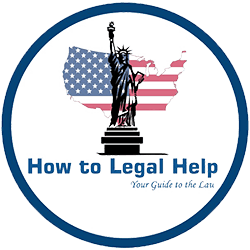Nev. R. Civ. P. 45
Advisory Committee Note-2019 Amendment
The amendments generally conform Rule 45 to FRCP 45. Rule 45(a)(4) is new and adopts a modified form of FRCP 45(a)(4). Rule 45(a)(4)(A) requires at least 7 days’ notice to the other parties before serving a subpoena on the person to whom it is directed. A timely objection and a motion for a protective order asserting that the subpoena calls for disclosure of privileged, confidential, or other protected matter stays service of the subpoena until the court rules on the objection and motion. Objections and a motion for protective order not based on privilege, confidentiality or other recognized protection from disclosure such as the work product doctrine do not automatically stay service of the subpoena; the objecting party in that instance must apply to the court for relief as with any other motion under Rule 26(c).
Rule 45(c)(2)(A)(ii) is also new. It encourages prompt disclosure of materials received in response to a subpoena so that the litigation can continue, while preserving the parties’ ability to dispute the costs of disclosing the materials. Rule 45(e) clarifies that a court considering a subpoena-related motion for a protective order, motion to compel, or motion to quash or modify may award Rule 37 sanctions.
Drafter’s Note
2004 Amendment
Subdivision (a) is amended to conform to the 1991 amendments to subdivision (a) of the federal rule with some minor revisions to tailor the provision to practice in state court. Rule 45(a)(1) authorizes the issuance of a subpoena to compel a nonparty to produce evidence independent of any deposition or permit inspection of premises within the nonparty’s possession. Rule 45(a)(3) authorizes “[a]n attorney as officer of the court” to issue and sign a subpoena on behalf of the court so long as the attorney is authorized to practice before that court.
Subdivision (b) is amended to conform to the 1991 amendments to subdivision (b) of the federal rule. Subdivision (b)(1) retains the text of former subdivision (c) with some minor changes to delete reference to the sheriff or his deputy and to limit the requirement for one day’s attendance and mileage to subpoenas that command a person’s attendance. The fourth sentence is new and requires service of prior notice under Rule 5 of any commanded production of documents and things or inspection of premises. Unlike its federal counterpart, this new provision in the Nevada rule requires prior notice within a specific period of time. (Pretrial notice of subpoenas for testimony at trial is governed by revised Rule 16.1(a)(3)(A).) Subdivision (b)(2) retains language formerly set forth in the second sentence of subdivision (e)(1), providing that “a subpoena may be served at any place within the state,” but extends its application to subpoenas for depositions or production. Subdivision (b)(3) is new to the Nevada rule and addresses what is required to demonstrate proof of service.
Subdivision (c) is amended to conform to the 1991 amendments to the federal rule with some minor changes to reflect practice in state court. The revised provision states the rights of persons subject to subpoena. Subdivision (c)(1) addresses the duties and liabilities of a party or attorney “responsible for the issuance and service of a subpoena.” Subdivision (c)(2) retains language from former subdivision (d)(1), but it extends the 10-day period for response to a subpoena to 14 days. Subdivision (c)(3) replaces and expands on language from former subdivision (b), regarding the court’s authority to quash or modify a subpoena. Subdivision (c)(3)(A) specifies the circumstances in which the court “shall” quash or modify a subpoena. Subdivision (c)(3)(B) specifies circumstances in which a court “may” quash or modify a subpoena or impose appropriate conditions to protect the interests of the subpoenaed person.
Subdivision (d) is replaced in its entirety to conform to the 1991 amendments to the federal rule. Subdivision (d)(1) extends to nonparties the duty imposed on parties by the last paragraph of Rule 34(b), regarding the manner in which documents are produced. Subdivision (d)(2) addresses the specificity required when information subject to the subpoena is “withheld on a claim that it is privileged or subject to protection as trial preparation materials.”
Subdivision (e) retains the entirety of former subdivision (f). The 1991 amendment to the federal rule that added a second sentence to subdivision (e) regarding “adequate cause” for failing to obey a subpoena is not included in the revised Nevada rule.
